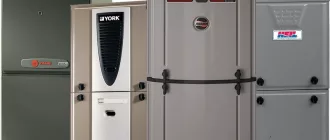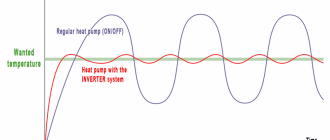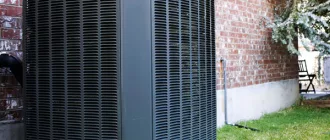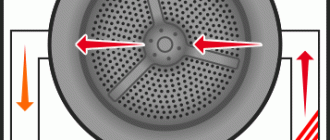
How to Stay Warm This Winter
Winter is here, and with it comes the cold weather that makes us want to stay indoors and cozy up by the fire. But staying warm during the winter months doesn’t have to mean hibernating until spring arrives. With a few simple tips and tricks, you can beat the chill and stay comfortable all season long.
One of the key ways to stay warm is by dressing in layers. Layering your clothing can trap heat and insulate your body, keeping you warm even in cold temperatures. Start with a base layer of thermal or moisture-wicking material, add a middle layer for added insulation, and finish off with a warm outer layer to block out the wind and cold.
Another helpful trick is to use blankets and throws strategically throughout your home. Adding extra blankets to your bed can help keep you warm while you sleep, and having a cozy throw blanket on hand in the living room can make lounging on the couch much more comfortable. And don’t forget about your feet! Keeping a pair of warm, fuzzy socks or slippers nearby can make all the difference in keeping your toes toasty.
Lastly, don’t underestimate the power of hot beverages. Sipping on a steaming cup of tea, coffee, or hot chocolate can warm you from the inside out. In addition to warming you up, these drinks can also provide a comforting and relaxing break from the cold.
By following these tips and tricks, you can stay warm and comfortable throughout the winter season. Don’t let the chill keep you cooped up indoors – embrace the season and enjoy all that winter has to offer!
Layer Up with Insulating Clothes
When the temperature drops, it’s important to bundle up and dress in layers to keep warm. Layering your clothes not only helps trap body heat but also allows you to adjust your clothing to your comfort level as the day progresses. Here are some tips and tricks for layering up with insulating clothes:
1. Base Layer
Start with a base layer made of moisture-wicking fabric, such as synthetic or merino wool. This layer will help regulate your body temperature and keep you dry by wicking away sweat from your skin.
2. Insulating Layer
Add an insulating layer to trap air and provide additional warmth. This layer can be a fleece jacket, a down vest, or a wool sweater. Choose a thickness that suits the temperature and activity level.
3. Outer Layer
Finish off with an outer layer that is windproof and waterproof to protect you from the elements. Look for a jacket or coat that has insulation or a thermal lining for extra warmth.
4. Accessories
Don’t forget to accessorize with insulating items such as a hat, scarf, and gloves. These accessories will help keep your extremities warm and prevent heat loss.
5. Consider Thermal Underwear
In extremely cold conditions, consider wearing thermal underwear for an added layer of insulation. Thermal tops and bottoms are designed to trap heat and keep your body warm.
6. Avoid Overlapping Layers
When layering, be mindful of avoiding overlapping layers, as this can cause discomfort and restrict movement. Make sure each layer is properly fitted and allows freedom of movement.
7. Carry Extra Layers
If you anticipate spending a long time outdoors or in extreme conditions, consider carrying extra layers in your bag. This way, you can add or remove layers as needed to maintain your comfort level.
Remember, it’s important to stay warm and comfortable during the winter months. Layering up with insulating clothes is an effective way to beat the chill and enjoy your time outdoors.
Keep Your Head and Feet Warm
When it comes to staying warm during the winter, it’s essential to make sure your head and feet are properly insulated. These areas of the body are particularly susceptible to the cold, so taking extra precautions is necessary.
1. Wear a Hat: Heat escapes through your head, so wearing a hat is vital for retaining body heat. Opt for a snug-fitting beanie or a thermal hat made from materials like fleece or wool. You can also layer a headband or earmuffs for additional warmth.
2. Invest in Insulated Socks: Cold feet can quickly make you feel uncomfortable. Invest in a good pair of insulated socks made from materials such as wool or thermal fabrics. These materials will help keep your feet warm and dry while providing insulation against the cold.
3. Use Toe Warmers: If you’re prone to freezing toes, toe warmers can be a game-changer. These small adhesive patches can be placed on the top or bottom of your socks to provide heat and keep your toes toasty warm. They are a great option for outdoor activities like skiing or hiking.
4. Layer Up on Footwear: Opt for footwear that has insulation and good traction to prevent slipping on icy surfaces. Consider wearing thermal insoles to add an extra layer of warmth and cushioning to your shoes. If you’re going to be outdoors for an extended period, consider using waterproof boots to keep your feet dry and warm.
5. Avoid Cotton Socks: Cotton socks may feel comfortable, but they are not suitable for cold weather. They tend to hold moisture, which can make your feet feel damp and chilly. Instead, choose socks made from synthetic or natural fibers like wool, which wick away moisture and provide better insulation.
Keeping your head and feet warm is essential for staying comfortable and preventing frostbite during the winter months. By following these tips and investing in some high-quality warm accessories, you can ensure that you’ll stay cozy and warm all season long.
Seal Any Drafts in Your Home
One of the most effective ways to stay warm during the winter is to seal any drafts in your home. Drafts are air leaks that allow cold air to enter and warm air to escape, making it more difficult to keep your home warm and cozy. By properly sealing these drafts, you can keep the cold air out and the warm air in, making your home more comfortable and energy-efficient.
Here are some tips and tricks to help you seal drafts in your home:
- Check for drafts: Start by conducting a thorough inspection of your home to identify any areas where drafts may be present. Common areas for drafts include windows, doors, vents, and electrical outlets. Look for any gaps, cracks, or visible signs of air leakage.
- Seal windows and doors: Use weatherstripping or caulk to seal any gaps around your windows and doors. Apply weatherstripping to the sides and bottom of doors and caulk any gaps between the window frame and the wall. This will help prevent drafts and keep the warm air inside.
- Insulate electrical outlets and switches: Many people overlook the fact that electrical outlets and switches can be a source of drafts. Use foam gaskets or insulating pads to seal these areas and prevent air leakage.
- Use draft stoppers: Place draft stoppers or door sweeps at the bottom of your doors to block cold air from entering your home. These can be purchased at home improvement stores or easily made at home using fabric and filling material.
- Insulate your attic and walls: Proper insulation in your attic and walls can greatly reduce heat loss and prevent drafts. Consider adding insulation to these areas if you haven’t already done so.
- Seal air ducts: Leaky air ducts can contribute to drafts and reduce the efficiency of your heating system. Inspect your air ducts for any leaks or loose connections and seal them with duct mastic or metal tape.
By taking the time to seal drafts in your home, you can improve your comfort and save on energy costs. You may also want to consider using draft stoppers for windows, hanging heavier curtains, and using window insulator kits to further reduce drafts and heat loss. Stay warm this winter by making your home draft-free!
Use Thermal Curtains to Keep the Cold Out
Winter is the time when the temperature drops and keeping your home warm becomes a top priority. One effective way to keep the cold air out and the warm air in is by using thermal curtains. Thermal curtains are specially designed to provide insulation and keep your home cozy during the chilly winter months.
Thermal curtains have a unique lining that is made of thick, insulating material. This lining helps to trap the cold air that tries to seep in through the windows, preventing it from entering your room. The insulating property of thermal curtains also works in reverse, preventing the warm air from escaping to the outside, thereby maintaining a comfortable indoor temperature.
Not only do thermal curtains help in keeping your room warm, but they also have other benefits. They can block out unwanted light, providing you with a dark and comfortable environment for better sleep. Additionally, thermal curtains can reduce outside noise, especially if you live in a noisy neighborhood or near a busy street.
When choosing thermal curtains for your home, here are a few things to consider:
- Size: Measure your windows accurately to ensure that the curtains will fully cover them. This will help to maximize their insulation properties.
- Style: Thermal curtains come in a variety of styles, colors, and patterns, allowing you to find the perfect fit for your home decor.
- Installation: Look for curtains that are easy to install and come with all the necessary hardware, such as rods and hooks.
Once you have chosen the right thermal curtains for your home, it’s important to install them correctly for optimal insulation. Make sure the curtains are hung close to the windows and that they touch the floor or have a few inches of overlap to prevent any cold air drafts.
In conclusion, using thermal curtains is a great way to keep the cold out and the warmth in during the winter months. Not only do they provide insulation, but they also block out light and reduce noise. Choose the right size and style, and install them properly to maximize their effectiveness. Stay warm and cozy this winter with thermal curtains!
Invest in a Thick Blanket
One of the simplest and coziest ways to stay warm in winter is to invest in a thick blanket. A good blanket can provide insulation and keep you warm throughout the night. When choosing a blanket, look for one that is made of a warm and durable material like wool or fleece. These fabrics are known for their ability to trap heat and keep you cozy in cold weather.
When shopping for a blanket, consider the size and weight. A larger blanket will provide better coverage and allow you to wrap yourself up fully. The weight of the blanket also matters, as a heavier blanket can provide more warmth. Look for a blanket that is thick and substantial, but still comfortable to sleep or relax under.
In addition to warmth, consider other factors such as the blanket’s texture and appearance. You want a blanket that feels soft and pleasant to the touch, so you can truly enjoy snuggling up with it. Also, choose a color or pattern that complements your bedroom decor or personal style.
To make the most of your thick blanket, layer it on your bed. Start with a sheet to create a barrier between you and the mattress, then add a warm blanket and another layer to trap the heat. Top it off with a comforter or duvet for extra warmth. This layering technique helps create an insulating effect, keeping you warm and cozy throughout the night.
Don’t forget to take care of your blanket to ensure its longevity. Follow the care instructions provided by the manufacturer, as different materials may require different care methods. Regularly wash and air dry your blanket to keep it clean and fresh.
Investing in a thick blanket is an effective and affordable way to stay warm this winter. Say goodbye to shivering nights and embrace the cozy comfort of a warm and snuggly blanket. So go ahead, treat yourself to a new blanket and cuddle up for a cozy and warm winter!
Use a Hot Water Bottle or Heating Pad
When the weather gets cold, one of the most effective ways to stay warm is by using a hot water bottle or a heating pad. These handy devices provide instant heat and can be used to warm up your bed, your chair, or even just to hold onto and keep your hands warm.
To use a hot water bottle, simply fill it with hot water and secure the cap tightly. You can then place it in your bed under the covers a few minutes before you go to sleep to warm up your sheets. Or, you can hold it against your body to warm up if you’re feeling chilled. Hot water bottles can also be placed at the foot of your bed to warm your feet during the night.
If you prefer a heating pad, you can find electric ones that can be plugged into an outlet. These pads often have temperature controls, allowing you to adjust the heat level to your preference. Simply place the heating pad on your bed or chair and enjoy the warmth it provides.
Both hot water bottles and heating pads are relatively inexpensive and can be purchased at most drugstores or online. They are a great investment for staying warm during the winter months.
- Fill a hot water bottle with hot water and secure the cap tightly.
- Place the hot water bottle in your bed under the covers a few minutes before you go to sleep to warm up your sheets.
- Hold the hot water bottle against your body to warm up if you’re feeling chilled.
- Place the hot water bottle at the foot of your bed to warm your feet during the night.
- Use an electric heating pad with temperature controls to adjust the heat level to your preference.
- Place the heating pad on your bed or chair and enjoy the warmth it provides.
- Both hot water bottles and heating pads can be purchased at most drugstores or online.
Using a hot water bottle or heating pad is a simple and effective way to stay warm during the winter. Whether you’re looking to warm up your bed before sleep or just need something to cuddle up to on a cold day, these devices are sure to keep you cozy. So don’t let the chill get to you, try using a hot water bottle or heating pad and stay warm all winter long!
Stay Active to Generate Heat
When the winter chill sets in, staying active is not just good for your overall health, it’s also an effective way to generate heat and keep warm. Physical activity increases your heart rate, which in turn raises your body temperature. Here are some tips on how to stay active and generate heat during the winter:
- Indoor Workouts: If it’s too cold to exercise outdoors, try indoor workouts such as yoga, Pilates, or dance classes. These activities not only keep you warm, but they also help improve flexibility and strength.
- Home Exercises: You don’t need fancy equipment or a gym membership to stay active. There are plenty of exercises you can do at home, such as bodyweight exercises, squats, lunges, and push-ups. You can also follow online workout videos or use fitness apps for guidance.
- Active Hobbies: Engage in hobbies that require physical movement, such as gardening, cooking, or DIY projects. These activities not only keep you warm, but they also provide a sense of accomplishment and relaxation.
- Winter Sports: Embrace the winter season by participating in winter sports such as skiing, snowboarding, ice skating, or snowshoeing. These activities are not only fun but also help you stay active and warm.
Remember to dress appropriately for your physical activity. Layer your clothing to trap heat and remove layers as you warm up. Wearing moisture-wicking and insulating fabrics can help you stay comfortable during your activities.
Drink Warm Beverages
One of the best ways to stay warm during the winter months is by drinking warm beverages. Not only do they help to warm you up from the inside out, but they can also provide a comforting and cozy feeling.
Some warm beverages to consider include:

- Hot tea: There are so many different flavors of tea to choose from, each offering its own unique benefits. Whether you prefer herbal teas, black teas, or green teas, there is sure to be a flavor that suits your taste buds.
- Coffee: A warm cup of coffee can be the perfect pick-me-up on a chilly winter morning. Whether you prefer a simple black coffee, a creamy latte, or a flavorful mocha, coffee can help to warm you up and give you the energy you need to start your day.
- Hot chocolate: Nothing is quite as comforting as a cup of hot chocolate on a cold winter’s day. The rich and creamy chocolate flavor is sure to satisfy your sweet tooth while also providing warmth and comfort.
- Mulled cider: If you’re looking for a warm beverage with a little bit of spice, mulled cider is a great choice. Made with apple cider, cinnamon, cloves, and other spices, mulled cider is the perfect drink to enjoy by the fireplace on a cold winter evening.
Make sure to have a selection of warm beverages on hand this winter to help keep you cozy and warm. Whether you prefer tea, coffee, hot chocolate, or mulled cider, there is a warm beverage out there to suit your taste.
Cook Warm Meals
One of the best ways to stay warm during the winter is to cook warm meals. Not only will cooking warm meals help to heat up your home, but it will also provide you with a delicious and comforting meal to enjoy.
Here are some tips for cooking warm meals during the winter:
- Choose hearty ingredients: Opt for ingredients that are rich and filling, such as root vegetables, beans, and whole grains. These ingredients will not only add warmth to your meal but also provide you with essential nutrients.
- Use warming spices: Incorporate spices like cinnamon, ginger, cloves, and nutmeg into your recipes. These spices not only add flavor but also help to promote warmth in the body.
- Try slow-cooked meals: Slow-cooked meals, such as stews, soups, and casseroles, are perfect for winter. Not only do these meals require minimal effort, but they also fill your home with delicious aromas.
- Get creative with hot drinks: Warm up from the inside out by experimenting with hot drink recipes. Try making homemade hot chocolate, spiced apple cider, or mulled wine to enjoy on chilly evenings.
Additionally, cooking warm meals can be a great way to spend time with loved ones. Invite friends or family over for a cozy dinner and enjoy good company and delicious food.
Remember, the key to staying warm during the winter is to embrace the season and find joy in the simple pleasures, like cooking warm meals. So, put on your apron, turn on the stove, and enjoy the warmth that comes from cooking and eating comforting winter dishes.
Make Use of Fireplace or Heaters
One of the most traditional and effective ways to stay warm during winter is by utilizing a fireplace or heaters. These heating sources not only provide warmth but also add a cozy ambiance to your living space. Here are some tips on how to make the most of your fireplace or heaters:
- Ensure safety: Before using a fireplace or heater, it’s crucial to inspect and maintain them regularly. Clean the chimney, check for any blockages or damage, and ensure that the heater is functioning properly.
- Use the right fuel: If you have a fireplace, choose the right type of fuel, such as dry firewood or manufactured fireplace logs. Avoid burning materials that can release harmful substances, like treated wood or trash.
- Maximize heat distribution: To enhance the heating efficiency of your fireplace or heater, place a fan in the room to circulate warm air. You can also consider using a heat-powered fan that automatically operates when the stove or fireplace heats up.
- Opt for zone heating: Instead of relying solely on central heating, use a fireplace or heater to warm up specific areas of your home. This approach, known as zone heating, allows you to save energy and reduce your heating costs.
- Regulate temperature: If you’re using a heater, make sure to set the temperature at a comfortable level. It’s also advisable to use a programmable thermostat to control the heating based on your schedule.
- Practice safety measures: Always prioritize safety when using a fireplace or heater. Keep flammable materials away from the heating source, use a fire screen to prevent sparks, and never leave the fireplace or heater unattended.
Whether you prefer the crackling sound of a wood-burning fireplace or the convenience of a modern heater, making use of these heating sources can help you stay warm and cozy throughout the winter season.
Cover Your Windows with Plastic Film
One of the most effective ways to keep the cold air out and the warm air in is by covering your windows with plastic film. This simple and affordable technique can significantly reduce heat loss and save on your heating bills during the winter.
To cover your windows with plastic film, you will need the following materials:
- Plastic film insulation kit
- Double-sided tape
- Scissors
- Hairdryer or heat gun
Here is a step-by-step guide on how to install plastic film on your windows:
- Start by cleaning the window frame and glass to ensure proper adhesion.
- Cut the plastic film according to the size of your window, leaving an extra 2-3 inches on each side.
- Apply double-sided tape around the window frame, making sure to cover all sides.
- Remove the backing from the tape, and carefully place the plastic film on the sticky side, smoothing it out to remove any wrinkles or bubbles.
- Use a hairdryer or heat gun on low heat to gently shrink the plastic film, starting from one corner and moving in a circular motion. Be careful not to overheat or melt the film.
- Trim off any excess film using scissors.
- If you have multiple windows to cover, repeat the process for each one.
Once the plastic film is installed, you will notice an immediate difference in the insulation of your windows. It creates a barrier that helps prevent drafts and keeps the warmth inside your home.
Remember to remove the plastic film once the winter season is over. It can easily be peeled off without leaving any residue behind.
By covering your windows with plastic film, you can make your home more energy efficient and stay warm throughout the winter months.
Stay Indoors during Extreme Cold
During extreme cold weather conditions, it is crucial to ensure your safety and stay indoors as much as possible. Here are a few reasons why staying inside is highly recommended during severe cold:
- Protection from hypothermia: Extreme cold temperatures can cause hypothermia, a potentially dangerous condition where the body loses heat faster than it can produce. Staying indoors helps maintain a warm environment and prevents the risk of hypothermia.
- Avoid frostbite: Frostbite occurs when body tissues freeze due to prolonged exposure to freezing temperatures. Staying indoors reduces the risk of frostbite by minimizing exposure to extreme cold, especially in the case of extremities like fingers, toes, nose, and ears.
- Prevent respiratory problems: Very cold air can potentially irritate the respiratory system, leading to breathing difficulties and respiratory problems, especially in individuals with existing conditions such as asthma. Staying indoors helps protect your respiratory health and keeps you warm.
- Reduce the risk of accidents: Extreme cold weather conditions make it harder to drive and walk safely. Icy roads and sidewalks increase the risk of accidents and injury. Staying indoors avoids unnecessary exposure to these hazardous conditions.
While staying indoors during extreme cold, there are several things you can do to stay warm and comfortable:
- Bundle up: Wear warm and layered clothing, including a hat, gloves, scarves, and thermal socks, to provide maximum insulation.
- Keep your home well-insulated: Ensure your home is properly insulated to keep the cold air out and the warm air in. Check for any drafts or leaks around windows and doors, and consider using draft stoppers or weatherstripping to seal them.
- Use space heaters or a fireplace: If you have access to space heaters or a fireplace, use them to add extra warmth to your living space. However, remember to follow safety guidelines and never leave them unattended.
- Stay active: Engage in indoor activities that keep you physically active to generate body heat. This can include household chores, exercises, or dancing.
- Enjoy warm beverages and food: Sip on hot drinks like tea, coffee, or hot chocolate, and eat warm, comforting foods to help raise your body temperature.
Remember, staying indoors during extreme cold is essential for your safety and well-being. Take necessary precautions to keep warm and make the most out of your time indoors.
Block Out Cold Air with Door Draft Stoppers
When the winter winds start blowing, keeping the cold air from seeping into your home becomes a top priority. One simple and effective way to block out cold air is by using door draft stoppers. These handy devices are designed to fit snuggly against the bottom of your doors, creating a barrier that prevents cold drafts from entering your home. Here are some tips and tricks to help you use door draft stoppers effectively:
- Measure your doors: Before purchasing a door draft stopper, it’s important to measure the width of your doors. You want to make sure the draft stopper you choose fits securely against the bottom of the door without any gaps.
- Choose the right material: Door draft stoppers come in a variety of materials, including foam, fabric, and silicone. Foam and fabric draft stoppers are soft and flexible, making them easy to install and remove. Silicone draft stoppers are more durable and can withstand heavy use.
- Install the draft stopper: Most door draft stoppers are designed to simply slide under the door. However, some may require adhesive strips or fasteners to secure them in place. Follow the manufacturer’s instructions to ensure proper installation.
- Check for gaps: After installing the door draft stopper, close the door and check for any gaps. If you see light shining through or feel cold air coming in, adjust the draft stopper until the gap is fully covered.
- Don’t forget about windows: Door draft stoppers are not only useful for doors but can also be used on windows. Place them along the bottom of the window frame to block out cold air from entering.
- Consider using a double-sided draft stopper: For extra insulation, you can opt for a double-sided door draft stopper. These models have a strip that fits against the bottom of the door and another strip that hangs down on the inside of the door to provide an additional barrier against cold air.
By using door draft stoppers, you can effectively block out cold air and keep your home warmer during the winter months. Take the time to measure your doors, choose the right material, and properly install the draft stoppers for maximum efficiency. Stay warm and cozy all winter long!
Wear Warm Socks and Slippers
During the winter months, it’s essential to keep your feet warm to maintain overall body temperature. One simple and effective way to do this is by wearing warm socks and slippers.
Why wear warm socks?
When the temperature drops, your body tries to conserve heat by redirecting blood flow away from your extremities, including your feet. This can result in cold feet and discomfort. Wearing warm socks helps insulate your feet, trapping heat and keeping them cozy.
Materials
Choose socks made from high-quality materials that provide insulation and good moisture-wicking properties. Wool and thermal socks are excellent options as they offer excellent warmth and can retain heat even when damp.
Layering
If you have particularly cold feet, consider layering your socks. Start with a thin, moisture-wicking sock as a base layer, and then add a thicker, insulating sock on top. Multiple layers can create air pockets that trap warmth and keep your feet toasty in freezing temperatures.
Slippers
In addition to wearing warm socks, it’s a good idea to invest in a pair of cozy slippers. Slippers offer an extra layer of insulation and can protect your feet from cold floors. Look for slippers with a soft, plush lining and a non-slip sole for added safety.
Proper fit
Ensure that your socks and slippers fit well. Snug-fitting socks help prevent cold air from seeping in, while loose-fitting slippers can lead to heat loss. Take the time to find the right size and consider trying on different brands and styles to find what works best for you.
Conclusion
Wearing warm socks and slippers is a simple yet effective way to keep your feet warm during the winter months. By choosing the right materials, layering when necessary, investing in cozy slippers, and ensuring proper fit, you can stay comfortable and beat the winter chill.
Use Electric Blankets
Electric blankets are a great way to stay warm during the winter months. They provide a consistent source of heat that can be adjusted to your desired temperature. Here are a few tips for using electric blankets:
- Choose the right size: Electric blankets come in various sizes, so make sure to choose one that fits your bed properly. It should cover the entire surface of your mattress.
- Preheat the blanket: Most electric blankets have a preheat function. Turn it on a few minutes before you plan to get into bed to ensure that your sheets and mattress are warm and cozy.
- Use a timer: If you’re concerned about leaving the blanket on all night, look for a model with a timer. This will allow you to set a specific duration for the blanket to stay on, giving you peace of mind while you sleep.
- Layer your bedding: Electric blankets work best when used in combination with other bedding. Layer a sheet, blanket, and comforter on top of the electric blanket to trap the heat and create an extra cozy sleeping environment.
- Follow safety precautions: Always read and follow the manufacturer’s instructions when using an electric blanket. Avoid folding or bunching the blanket, and never use it if it’s damaged or wet.
With these tips in mind, you can stay toasty warm all winter long with the help of an electric blanket. Stay cozy and enjoy the cold weather from the comfort of your warm bed!
Keep Your Car Winter-Ready
Winter weather can be especially harsh on vehicles, so it’s important to take steps to keep your car winter-ready. By following a few simple tips and tricks, you can ensure that your car stays in great condition and is ready to handle whatever winter throws at it.
- Check your battery: Cold temperatures can have a negative impact on your car’s battery. You should have your battery tested to ensure that it is still in good condition and able to hold a charge. If it’s more than a few years old, it may be a good idea to replace it.
- Inspect your tires: Good traction is essential for safe winter driving, so make sure your tires are in good condition. Check the tire pressure regularly and ensure that they have adequate tread depth. Consider switching to winter tires, which are designed to provide better grip in snowy and icy conditions.
- Top up fluids: Make sure your car’s fluids are topped up, including the coolant, oil, and windshield washer fluid. In cold weather, it’s important to have the right concentration of antifreeze in your coolant to prevent freezing. Use a winter-grade windshield washer fluid that won’t freeze in low temperatures.
- Replace windshield wipers: Visibility is crucial during winter driving, so make sure your windshield wipers are in good condition. Replace them if they are worn out or not effectively clearing the windshield. Consider using winter wiper blades, which are designed to better handle snow and ice.
- Prepare an emergency kit: In case of a breakdown or getting stuck, it’s important to have an emergency kit in your car. This kit should include items such as a flashlight, extra warm clothes and blankets, a shovel, an ice scraper, and sand or kitty litter to provide traction on slippery surfaces.
- Keep a full tank of gas: It’s a good idea to keep your gas tank at least half full during the winter months. This helps prevent moisture from forming in the fuel lines and ensures that you have enough fuel in case you get stranded or stuck in traffic for an extended period of time.
- Protect your car’s exterior: The harsh conditions of winter can cause damage to your car’s paint and finish. Consider applying a protective wax or sealant to the exterior of your car to help prevent salt and other winter debris from corroding the paint. Regularly wash your car to remove salt and grime that can accumulate.
- Schedule a maintenance check: If you haven’t done so already, schedule a maintenance check with a qualified mechanic. They can inspect your car for any potential issues and make any necessary repairs or adjustments to ensure that your car is ready to handle winter weather.
By taking these steps to keep your car winter-ready, you can ensure that you are prepared for the cold temperatures, snow, and ice that winter brings. Stay safe on the roads and enjoy the winter season!
Questions and answers:
What are some common ways to stay warm during the winter?
Some common ways to stay warm during the winter include wearing layers of clothing, using blankets and afghans, drinking warm beverages, and using space heaters or electric blankets.
Are there any specific types of clothing that can help keep you warm during the winter?
Yes, there are specific types of clothing that can help keep you warm during the winter. These include thermal underwear, wool socks, insulated jackets, hats, and gloves.
What can I do to keep my house warm without turning up the thermostat?
There are a few things you can do to keep your house warm without turning up the thermostat. These include sealing drafts around windows and doors, using draft stoppers, using window insulation film, and keeping curtains or blinds closed at night.
Is it essential to stay active to stay warm during the winter?
While staying active can help keep you warm during the winter, it is not essential. Other methods, such as dressing warmly and using blankets, can also help keep you warm without being active.
Are there any specific foods that can help keep your body warm during the winter?
Yes, there are specific foods that can help keep your body warm during the winter. These include hot soups, spicy foods, and warm beverages such as tea or hot chocolate.
What are some tips to stay warm during winter?
There are several tips to stay warm during winter. Firstly, you can layer your clothing to trap in more heat. Secondly, you can use blankets and hot water bottles to keep warm indoors. Thirdly, you can drink warm beverages and eat hot meals to raise your internal body temperature. Lastly, you can insulate your home by using draft stoppers, sealing windows and doors, and using heavy curtains to keep the cold out.






